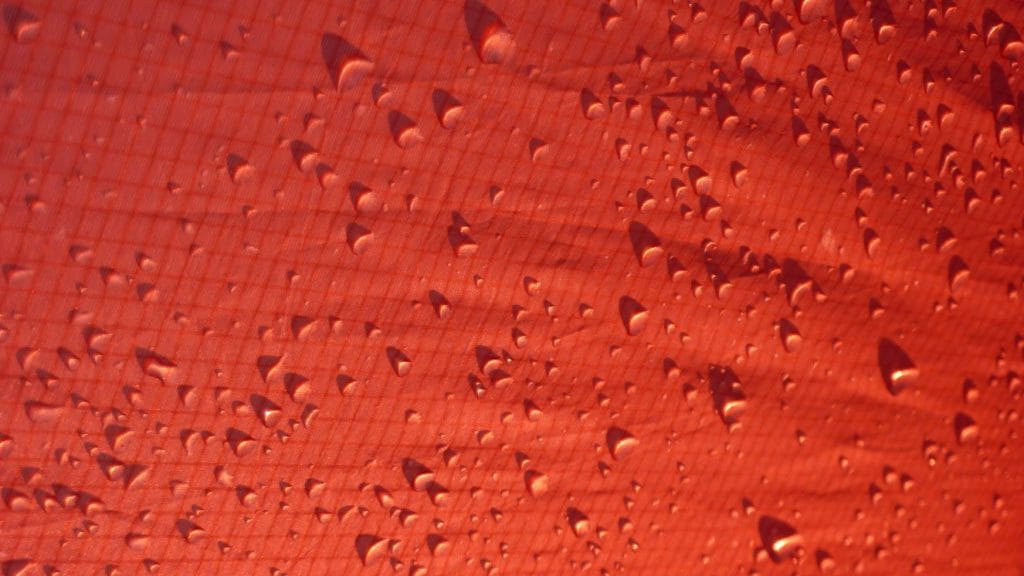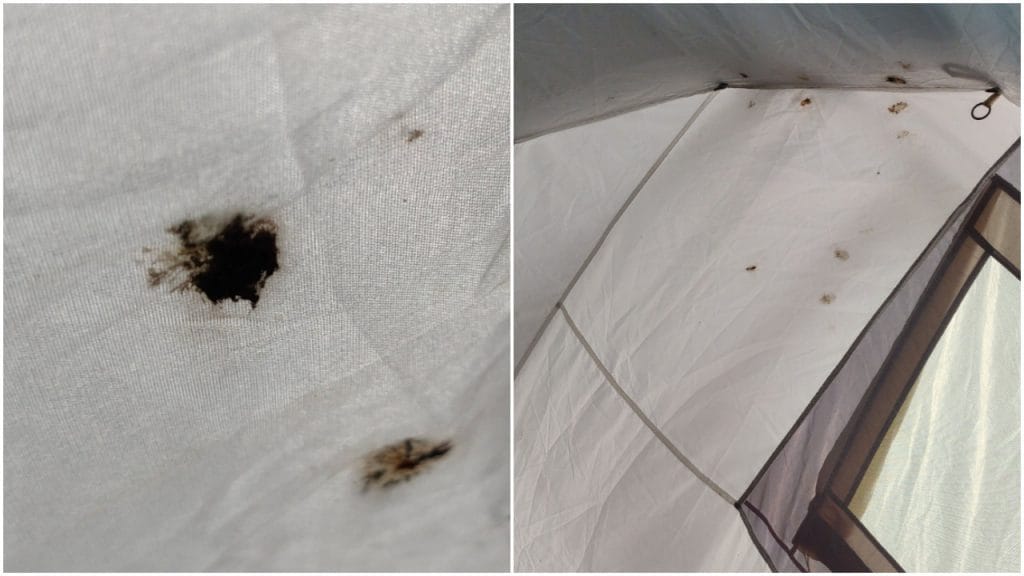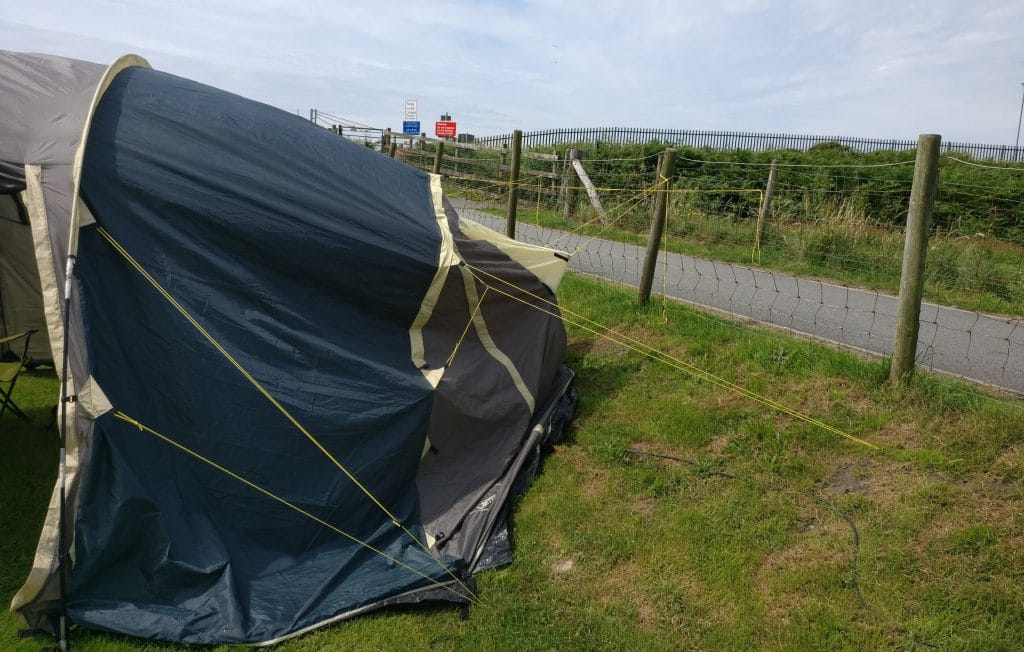A report from the Association of Independent Festivals suggests tents left behind in the fields generate 900 tonnes of plastic waste every year. With the average tent being the equivalent of 8,750 plastic straws, it’s always worth repairing your tent when possible. And it’s cheaper.
A decent quality tent should last for years if you look after it, and that doesn’t mean it has to be an expensive branded tent either. If you are stuck with an old tent you never want to use again or something broken beyond repair, there’s plenty of ways you can recycle a tent rather than letting it go to landfill.
Over 60 festivals have today backed the AIF’s ‘Take Your Tent Home‘ campaign, including Boomtown, Boardmasters, Kendal Calling and Shambala.
Here’s some easy ways to repair your tent and keep it in good condition. There’s some quick fixes you can do in the field and some regular maintenance and permanent fixes you should do at home.
Fix a jammed or broken zip
The zip is often the first thing to cause problems. This great video from Camplight demonstrates three easy fixes for common zip issues.
Broken or bent sections of zip can be pushed back into place with a blunt object, then waxed over to ensure the zipper passes smoothly.
If the zipper no longer grips the zip, pull it right the way back and force in back into place with a pair of needlenose pliers.
If the zipper has come off completely, you’ll need to make a small cut in the zip tracks and use tape to finish off the repair. Watching the brilliant video above makes it really easy to figure out how to solve all three issues.
Waterproofing spray

If your tent has started to leak, it might just be because the waterproofing agent has worn down over the years. This water repellent is what makes the water bead and run down the outside of your tent.
Winfields Outdoors recommend pitching the tent outdoors on a dry day or if possible, in a garage. Make sure the tent is clean and apply your waterproofing spray evenly all over the exterior. Wipe off any excess, leave it to dry, and you’re done.
You might want to reseal the seams too while you’re at it, which we’ll get to in a minute.
[amazon box=”B003DI6ZTQ” description=” “]
Fix a broken tent pole
Another great video from Camplight shows how you can cut down a spare, mismatched pole to match the length required for your tent.
You might have a perfect fit knocking around the garage somewhere if one was included way back when you bought your tent. If you can’t find anything suitable, you can get replacement fibreglass poles online and from most camping and outdoors shops.
You’ll also need to rethread the elastic, which is definitely the tricky part. I’d advise watching the video above for some tips!
Buy replacement tent poles:
Amazon | Winfields Outdoors | Go Outdoors
Reseal the seams

Like the outer panels of your tent, the seams also lose their waterproofing after a while. You can sort this pretty easily with a tube of seam sealant, and it’s probably best to do it at the same time as doing the waterproofing spray above.
Winfields recommend setting your tent up somewhere dry, cleaning the seams first with rubbing alcohol and sealing the seams from the inside. Check your tents instructions to make sure you don’t use the wrong type of sealant, and always follow the instructions on the sealant you buy over anything like this you read online.
[amazon box=”B00D4OVUW6″ description=” “]
Bash broken tent pegs back into shape
If you’ve bent your tent pegs out of shape bashing them into buried rocks, you can use the same mallet to (carefully!) knock them back into shape. If that’s not working, heating them up over a camping stove can make them much easier to reshape. Be really, really careful though.
You can pick up new tent pegs for a quid or two in most supermarkets and bargains shops during the summer, though some higher quality ones might be less likely to bend out of shape.
Fix tent tears with duct tape and patches
If your tent gets a small tear while you’re at a festival, a few strips of duct tape can make a temporary repair that should stop things getting worse until you get home. If you can add a shot of waterproofing spray on top, even better.
When you get home, you’ll want to find a more permanent fix. Try a tent repair patch kit from Amazon or an outdoor shop like Winfields or follow these instructions on Wikihow for creating your own patch.
If you’ve still got them or if you can find them online, the manufacturer’s instructions for your tent might have some useful advice too. You might get away with using the duct tape for a quick snapped pole repair too, at least for the odd night until you get home.
[amazon box=”B006MKBVNM, B000KBH7S2″ description=” “]
Clean the mould off then store your tent properly next time!

Storing your tent properly will really help your tent last as long as possible. It’s pretty easy, just a cool dry place. Not a damp, leaky shed where it’ll get wet and start growing mould. Don’t store your tent bag vertically either, standing it on end for months can damage the poles.
Make sure you dry your tent out properly when you get home, even if it was only a bit damp when you took it down. Wait for the next dry day and pitch it in the sun for a few hours.
If your tents already grown some horrible mould like shown above, pitch the tent and clean it off with a sponge. Use warm water and natural soap, and if it’s an external layer you’ll need to apply waterproofing spray afterwards.
Manufacturers Vango actually recommend using Milton Sterilising Fluid, designed for baby items, to sponge down the affected area and stop mould from spreading.
[amazon box=”B00413CDZ2″ description=” “]
Get your tent repaired professionally

If you’ve got a really good, expensive tent with a flaw you can’t repair yourself, you might want to look at getting it repaired professionally. Have a look for local tent repair services on Google Maps.
If you can’t find anything nearby, some companies will let you send your tent to them by courier for repair. These include Scottish Mountain Gear and Lancashire Sports Repairs, who both publish price lists on their website.
Image credits:
Raindrops – Andrew Bowden / ( CC BY-SA 2.0 )
